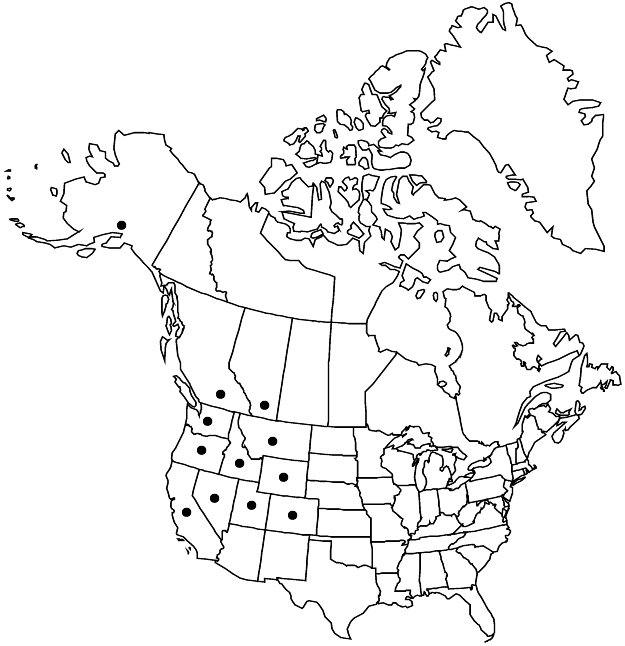Polygonum minimum
Botany (Fortieth Parallel), 315. 1871.
Herbs. Stems prostrate to erect, often zigzagged, reddish brown, simple or branched from base, wiry, 2–30 cm, papillose-scabrid-ulous. Leaves evenly distributed or crowded at branch tips, articulated to ocreae, basal leaves persistent, hardly reduced distally; ocrea 1–4 mm, papillose-scabridulous, proximal part cylindric, distal part entire or dentate-lacerate; petiole 0.1–3 mm; blade 1-veined, not pleated, narrowly elliptic, elliptic, ovate, obovate, or subround, 6–27 × 3–8 mm, margins flat, smooth, irregularly thickened or papillose-denticulate, apex apiculate, green adaxially. Inflorescences axillary; cymes from near stem and branch bases, sometimes also crowded at branch apices, 1–3-flowered. Pedicels enclosed in ocreae, erect to spreading, 2–3 mm. Flowers semi-open or closed; perianth 1.8–2.5 mm; tube 22–29% of perianth length; tepals overlapping, greenish with narrow white or pink margins, almost sepaloid, oblong, cucullate, ± navicular, apex rounded; midveins thickened, unbranched; stamens 8. Achenes enclosed in perianth or tip exserted, black, elliptic to ovate, 1.8–2.3 mm, faces subequal, smooth, shiny.
Phenology: Flowering Jul–Sep.
Habitat: Alpine to subalpine sites, open or semibarren soil
Elevation: 1500-3300 m
Distribution

Alta., B.C., Alaska, Calif., Colo., Idaho, Mont., Nev., Oreg., Utah, Wash., Wyo.
Discussion
Selected References
None.